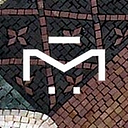The intricate beauty of custom mosaic portraits
As you already know, we often use this awesome blog to chit-chat about the glorious ways of mosaic art and we’ve done so covering a variety of artwork styles and topics. One thing we haven’t covered, the art of mosaic portraits. Yes, I say “the art of” because every mosaic artist will tell you that creating a mosaic portrait takes much more skill and much more dedication than creating any other type of mosaic artwork.
Needless to say, I always felt as if mosaic portrait artworks are somehow larger than life, so I always skipped the subject thinking that I wouldn’t do it justice. However, we’ve survived through the majority of 2020 and we’re about to leave it behind, so I don’t think tackling the subject of mosaic portraits would be a problem anymore.
Mosaics have been around since the 3rd millennium BC and those earliest artworks were found in an ancient Mesopotamian temple. Early mosaics were made of seashells, ivory, and a variety of stones and they were usually abstract in style. Mesopotamian mosaic artists laid the groundwork for mosaic art that was created thousands of years later by the distinguished mosaicists of Ancient Greece.
It wasn’t until the 4th century and the Renaissance that mosaic portraits really started gaining some traction. Mosaic portraits of saints and biblical figures started appearing on the ceilings and walls of Catholic basilicas all over Italy. These transcendent artworks were typically created in glass and those that are preserved are still as mesmerizingly beautiful as then.
Later on, in the 5th-century mosaic portraits became the central art form of the Byzantine empire. These stunning portraits were celebrated for their intricate beauty and liberal use of shiny gold leaves. Most of these artworks have been destroyed during wars and conquests, but those that remained are considered to be some of the most gorgeous mosaics in the world.
Modern mosaic portraits are usually characterized by a dose of photo-realism. With paintings, that effect is moderately easy to achieve, as the painter has the luxury of mixing pigments until they achieve the right shade. With mosaic art that matching is accomplished by sourcing a variety of different materials until you discover the one material that will do the trick. Needless to say, the process can be difficult and frustrating for the mosaic artist, but in the end, nothing matches the satisfaction of discovering that one perfect mosaic portrait material.
To achieve the photorealistic impression modern mosaic artists often use mixed media when creating mosaic portraits. Natural stone is beautiful, but it only comes in so many shades, which considerably limits the mosaicist’s work. That problem can be solved by adding glass, ceramic, or even colored mirror pieces, etc.
From sourcing the materials to creating a mosaic portrait masterpiece, it takes one helluva mosaic artist to do it. Experience makes the sourcing a bit easier, but creating an actual portrait is always a new experience, no matter how many times you do it. Valleys of one’s face, glints of their eyes, subtle shadows, and marks, it all takes immense skill to recreate with tiny pieces of hard materials. Now wonder mosaic portrait is one of the most renowned artistic expressions in the world.
